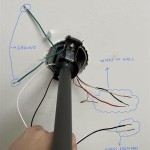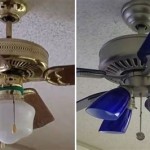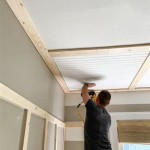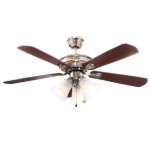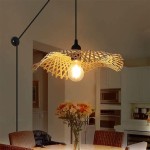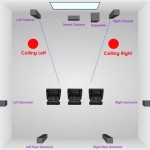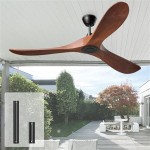Lightweight Ceiling Fans With Lights: A Comprehensive Guide
Ceiling fans with lights are a common and efficient way to improve air circulation and provide illumination in residential and commercial spaces. However, traditional ceiling fans can be heavy, making installation challenging, especially in older homes or spaces with potentially weaker ceiling structures. Lightweight ceiling fans with lights offer a practical alternative, combining the benefits of both functionalities without the added weight burden. This article explores the features, advantages, selection criteria, and installation considerations associated with lightweight ceiling fans with lights.
Why Choose Lightweight Ceiling Fans With Lights?
The primary advantage of a lightweight ceiling fan is its ease of installation. Their reduced weight minimizes the stress on the ceiling joists, making them suitable for a wider range of ceiling types, including those in older buildings that might not be able to support a heavier model. Installation can often be accomplished with minimal structural reinforcement, saving both time and money. Furthermore, these fans often prove easier for a single individual to install, whereas a heavier model may necessitate two or more people for safe maneuvering and mounting.
Beyond installation, lightweight ceiling fans provide energy savings. They efficiently circulate air, reducing the reliance on air conditioning and heating systems. The integrated light fixtures further enhance energy efficiency by allowing users to minimize the use of other light sources in the room. This combined functionality contributes to lower energy bills and a diminished carbon footprint.
The aesthetic flexibility is also a notable advantage. Lightweight ceiling fans come in a variety of styles, finishes, and blade designs. This provides homeowners with ample opportunity to select a fan that complements their interior decor. The reduced weight doesn't necessarily mean a compromise on style; many aesthetically pleasing designs are available specifically in lightweight construction.
Key Features to Consider
When selecting a lightweight ceiling fan with lights, several key features should be taken into consideration to ensure optimum performance and satisfaction. Blade span is a critical factor, as it dictates the area the fan can effectively cool. Larger rooms necessitate a greater blade span to ensure proper air circulation. Blades are generally measured from tip to tip, and the appropriate size correlates directly with the square footage of the room.
The motor of the fan is another crucial component. Look for energy-efficient motors with multiple speed settings. DC motors are generally more efficient and quieter than AC motors, though they may come with a higher initial cost. The motor's power rating indicates the fan's ability to move air effectively, and a higher rating generally translates to better performance, especially in larger spaces.
The type of light fixture is also essential. Consider the desired brightness and color temperature. LED lights are a popular choice due to their energy efficiency, long lifespan, and dimming capabilities. Different light fixture styles, such as integrated LED arrays or fixtures that accommodate standard light bulbs, should be evaluated based on personal preferences and lighting needs. The color rendering index (CRI) of the light source is also important; a higher CRI, typically above 80, indicates a more accurate representation of colors under the light.
Control options add an element of convenience and flexibility. Many lightweight ceiling fans come with remote controls that allow users to adjust the fan speed, dim the lights, and even set timers. Wall-mounted controls provide similar functionality and can be a more permanent solution. Smart home integration is also becoming increasingly common, allowing users to control the fan and lights through smartphone apps or voice assistants.
The material composition of the fan blades and housing impacts its durability and overall weight. Lightweight materials such as ABS plastic or carefully selected wood composites are frequently used. While these materials reduce weight, it is vital to ensure they are durable enough to withstand the rotational forces and environmental conditions they will be exposed to. The housing material, typically metal or durable plastic, should also be resistant to corrosion and wear.
Installation Considerations for Lightweight Ceiling Fans
Proper installation is crucial for the safe and efficient operation of any ceiling fan, including lightweight models. Before beginning the installation process, it is essential to ensure the ceiling electrical box is properly rated to support the weight of the fan and the forces generated by its operation. If the existing electrical box is inadequate, it must be replaced with a fan-rated box that can securely support the fan's weight and vibration.
The installation process generally involves several steps, including mounting the ceiling bracket, wiring the fan to the electrical system, attaching the fan blades, and installing the light fixture. Follow the manufacturer's instructions carefully to ensure each step is completed correctly. If you are not comfortable working with electrical wiring, it is recommended to hire a qualified electrician to perform the installation.
When working with electrical wiring, always turn off the power at the circuit breaker to prevent electric shock. Use a voltage tester to confirm that the power is off before touching any wires. Ensure all wire connections are secure and properly insulated to prevent short circuits or electrical hazards. Use wire connectors that are specifically designed for the wire gauge used in the installation.
The height of the ceiling fan installation is also an important consideration. Ideally, the fan blades should be at least seven feet above the floor to prevent people from accidentally hitting them. In rooms with low ceilings, it may be necessary to use a flush-mount ceiling fan, which sits closer to the ceiling. Extension downrods can be used in rooms with high ceilings to position the fan at the optimal height for air circulation.
After the installation is complete, test the fan to ensure it is operating correctly. Check that the fan blades are rotating smoothly and that there is no excessive vibration. Test all of the fan speeds and light settings to verify that they are functioning properly. If any issues are detected, consult the manufacturer's troubleshooting guide or contact a qualified technician for assistance.
Benefits of Lightweight Materials
The use of lightweight materials in ceiling fan construction provides a substantial advantage during installation and use. Materials such as ABS plastic, balsa wood composite, and aluminum alloys are employed for their durability and low density. These materials contribute to an overall lighter product, making it easier to handle and install, and reducing the stress on the ceiling structure.
ABS plastic is a particularly popular choice for fan blades due to its resistance to moisture and warping. This is especially advantageous in humid environments where wooden blades may be prone to damage over time. The plastic is also easy to clean and maintain, making it a practical choice for homeowners. ABS plastic can be molded into a variety of shapes and finishes, providing design flexibility.
Balsa wood composite, crafted from renewable resources, offers a combination of lightness and strength. The low density of balsa wood results in reduced blade weight, which minimizes strain on the motor and contributes to energy efficiency. The composite structure provides the necessary rigidity to prevent the blades from flexing or vibrating excessively during operation.
Aluminum alloys are frequently used for the fan housing and motor components. These alloys are lightweight, corrosion-resistant, and strong, providing a durable and reliable structure. The use of aluminum also contributes to efficient heat dissipation, which helps to extend the lifespan of the motor.
The choice of lightweight materials also impacts the overall shipping cost. Lighter ceiling fans are less expensive to transport, which can translate into savings for the consumer. The reduced weight also makes it easier for retailers to handle and store the fans, reducing the risk of damage during handling.

Tivleed Indoor Fan Blade 13 58 In Gold 29 53 Ceiling Light 120v Rpm 1000 Lumens W Led Lights Remote Controls Fly751t05

Eonini Socket Ceiling Fans Lights Fan Light Dimmable Led Bulb White Ebay

Siljoy 20 In Indoor Black Ceiling Fan Light Kit Led With Remote Control And Frosted White Acrylic Shade Sf0003

Ceiling Fan With Light Remote Control Reversible Noiseless Dc Motor Low Profile Okeli Lights

Starfire 56 In Pure White Ceiling Fan With Led Light Dan S City Fans Parts Accessories

Linden 52 Led 3 Inch Matte White Ceiling Fan

44 Minka Aire Light Wave White Modern Led Ceiling Fan With Remote 432j0 Lamps Plus

3 Blades Round Led Ceiling Fan Light Contemporary Tri Prism Crystal Brass Semi Mount Lighting Clearhalo

Miumaeov Ceiling Fans With Lights Modern Enclosed Fan Indoor Remote Control 5 Light Caged Kit For Kitchen 478645

Solara 60 In Indoor Outdoor Driftwood Ceiling Fan Dan S City Fans Parts Accessories
